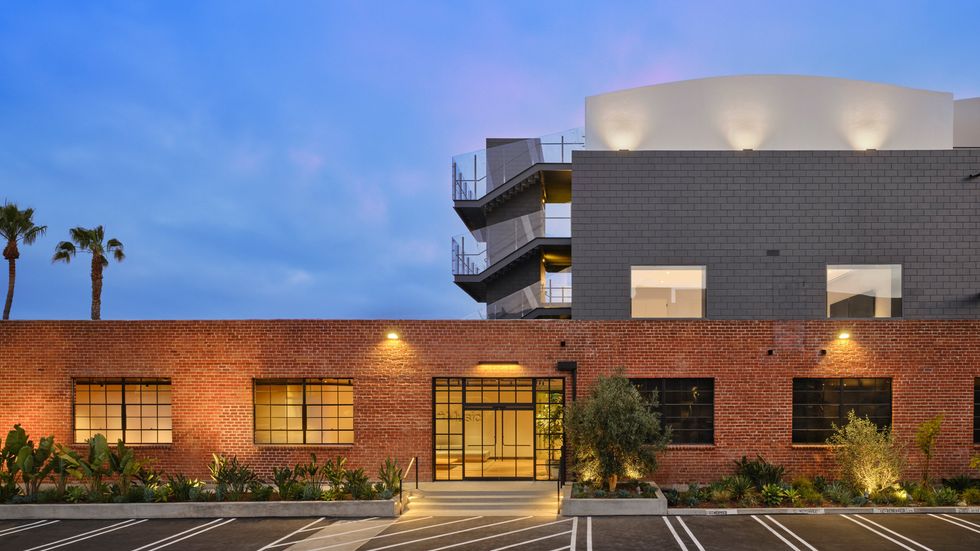Solar Storms Could Cost North America Up To $2.6 trillion. The JPL Is Trying To Predict When They Might Occur
Samson Amore is a reporter for dot.LA. He holds a degree in journalism from Emerson College. Send tips or pitches to samsonamore@dot.la and find him on Twitter @Samsonamore.

In the fall of 1859, astronomers around the world were awed and terrified by what is still considered the largest and most well-documented solar storms ever. Dubbed the Carrington Event, the geomagnetic disturbance was only visible for several minutes but had lasting effects on the planet for days.
Radios were temporarily rendered inoperable and telegraph lines were taken out across North America. The telegraph pylons sparked, their platinum heated nearly to its melting point producing “streams of fire.” One telegraph operator was injured after a live ground wire shocked him in the head.
In 2013, insurance firm Lloyd’s of London calculated that in the case of another Carrington type event, the outage could cost up to $2.6 trillion. Which explains why NASA is eager to learn more about the sun’s changing climate, in the hope that they can one day learn to predict solar storms.
The ongoing mission is called The Sun Radio Interferometer Space Experiment (or SunRISE for short). Despite being our largest celestial neighbor, there’s much we don’t know about how the sun behaves the way it does, particularly when it comes to solar flares or eruptions, which could pose a threat to critical technology systems on Earth.
“Entire communication satellites have been lost during solar flares, and there have even been some international interplanetary missions, where those spacecraft’s computer was taken out by a solar flare and lost permanently,” explained Justin Kasper, NASA’s principal investigator on SunRISe and a professor at the University of Michigan’s college of engineering.
According to Kasper, astronauts on the International Space Station are at extreme risk of flares – not only if their equipment fails, but also because they “can see a flash of light in their eyes every time a high-energy radiation particle [from the sun] passes through them,” he said. Adding that, if there was a massive solar storm between the two Apollo missions, and if an astronaut had been on the lunar surface during that event, they would have needed hospitalization.”
SunRISE will launch next year. The launch window – and the private company NASA will contract for a rideshare to orbit – still hasn’t been determined. But in the meantime, NASA is hard at work building six small research spacecraft called cube satellites roughly the size of toasters, which once launched will orbit the sun and will collectively function as a giant radio telescope, measuring the radio emissions from the sun that are naturally emitted when solar storms are occurring.
The satellites will also attempt to create 3D maps of the sun’s magnetic field, while also pinpointing the location of disturbances in its atmosphere. Once collected, this data will be invaluable in helping scientists understand how the sun works and what might trigger its weather changes.
When the sun’s climate shifts, it causes coronal mass ejections, explosions of plasma from the sun that radiate its magnetic field out into the cosmos. “Solar flares are a lot like earthquakes,” Kasper said. “There’s a billion little eruptions happening every day, but those don’t produce a lot of radiation.”
Some solar storms, Kasper said, aren’t directed at Earth but instead pummel Venus or other planets. The JPL is eager to send its SunRISE satellites to explore how this side of solar storms we rarely see.
Kasper added that as the private space race continues to accelerate full tilt, solar flares present more risk to orbiting technologies. Alarmingly, he also said scientists are gearing up for another “big one,” since solar activity tends to follow an 11-year cycle, with the worst effects happening roughly in the middle. Two years ago, we saw a major solar flare erupt, causing radio blackouts across South America.
“The sun has been really quiet the last seven or eight years, which has seen this kind of explosion in commercial activity in space,” Kasper said. “I think a lot of small companies are about to learn just how dangerous the sun can be when it acts up.”
- This Emergency Alert Nonprofit Saw Over 75,000 Incident Reports During the SoCal Storm ›
- Is a Commercial Space Station Possible? These Startups Are Racing To Be the First to Try It ›
- These 2 Los Angeles Startups Are on the Forefront of a New Space Health Care System ›
- Mining Asteroids, Space Contracts and How NASA Hopes to Create an Economy in Space ›
- What NASA's JPL Budget Increase Means for Space Exploration - dot.LA ›
- How NASA's JPL is Being Used to Track Emissions in LA - dot.LA ›
Samson Amore is a reporter for dot.LA. He holds a degree in journalism from Emerson College. Send tips or pitches to samsonamore@dot.la and find him on Twitter @Samsonamore.





 Image Source: Tinder
Image Source: Tinder Image Source: Apple
Image Source: Apple